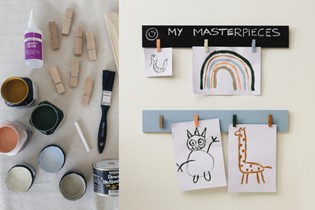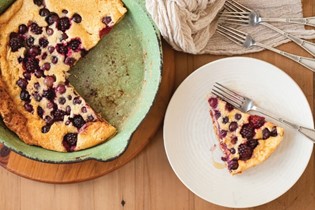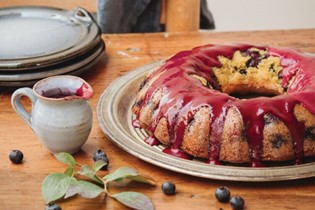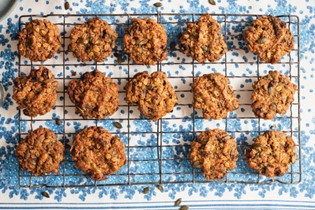The most common 'Starting Solids' questions answered for you

Jenny Douglas from Jumpstart Nutrition answers her most frequently asked questions about the starting solids journey.
Starting on solids should be an intuitive process for you and your baby. Your baby has started life knowing exactly the amount of milk feeds they need to grow and thrive, and they will give you cues to how they wish to be fed, how much they would like to eat and what foods they enjoy. Here is a list of the most commonly asked questions I get in my line of work…
When should I start my baby on solids?
No doubt you've already encountered other parents and grandparents who have told you when they started their baby on solids. Your grandmother may have started your mum on solids at two months of age and another mum may have started their child at seven months. Remember, it isn't a race.
In New Zealand, the recommendation is to wait until around six months of age, and not before four months. It's important to wait until your baby is showing all the signs of readiness before starting on solid foods. As you've probably already observed, all babies develop at different times and it’s more about their stage of development than how many months old they are.
The signs of readiness that your baby should have prior to starting solids are:
+ Good head control
+ Can sit with less support (but does not have to be able to sit independently)
+ Can bring their hands or objects to their mouth
+ Signs of biting and chewing
+ They can keep food in their mouth and do not push it out with their tongue
If you baby is not showing these signs by seven months of age, it would be a good time to discuss this with your WellChild nurse or GP. If your baby is premature, then aim to start introducing solids around three/four months after their ‘due date’, or when your paediatrician or speech and language therapist advise.

What foods should I give my baby?
There are two common approaches to starting solids for babies and these are traditional spoon feeding or baby-led weaning – where soft finger foods are offered after six months of age. If you’re starting your baby on solids before the age of six months, it’s recommended that you follow the spoon-feeding approach and offer smooth puree food and then introduce finger foods from six months. The traditional spoon feeding approach follows a stepwise progression of texture, from smooth puree to lumpy puree/mash to finger foods and then chopped up family foods by 10-12 months of age. Baby-led weaning is an approach that can start from 6 months of age and this involves offering soft finger foods from the start.
If your baby has been breastfed from birth, they have already developed a preference for sweet flavours as breast milk is naturally sweet. So when we introduce solid foods it’s important to help your baby learn there are other flavours, such as savoury, bitter, sour and spicy.
There has been a small study in New Zealand that has found that a ‘vegetable-first approach’ when starting on solids can help with acceptance of vegetables in later infancy. Starchy vegetables, such as kūmara and carrot, are great first foods to offer as they blend to a smooth puree or can also be offered as soft finger foods. You can mix breast milk or formula into puree, so that baby has a familiar milk taste alongside a new food.
It's also important to introduce iron foods soon after starting solids as this nutrient requirement cannot be met with milk feeds by six months of age. Some great first iron foods are lamb, beef, fish, lentils, chicken, egg, smooth nut butters and iron-fortified baby cereal. A combination of any of these are great to include and offering iron foods at most meals can be helpful to meet iron needs.
You don’t need to offer a single food every few days, you can quite quickly move to combining foods together. For example, you can offer meat and vegetable puree, or a finger food meal with a meat patty, cooked vegetable sticks and pasta.
Move to offering your family meals as soon as you can. Meals should contain around one third protein (eg meat/fish/egg/lentils/beans), one third carbohydrate (eg rice, quinoa, pasta, potato), one third vegetables (eg broccoli, carrot, peas) and a fat source (eg olive oil, nut butter, mayonnaise). Ensure that your baby avoids salt, added sugar or honey in the first year of life. If you add these into your family meal, first take out your baby’s portion before adding these into the meal. Herbs and spices (without salt) are great additions to baby food as they make the food taste exciting and expose your baby to family flavours.
Try to avoid offering commercially prepared baby foods every day, instead reserve these for when you are out and about, when travelling, or when life is too busy to cook. These foods do not taste as good as your home cooked foods and regular exposure to the flavours you enjoy at home will improve food acceptance throughout their life.

How do milk feeds work around solids and timing?
Milk feeds from either breast milk or formula remain an important energy and nutrient source for your baby. You should continue to offer milk feeds on-demand until around 8- 9 months when they can move to more structured feeding around nap/bedtimes.
When you first start on solids you will offer a milk feed first, there are two main reasons for this: breast milk aids digestion of starches (it has digestive enzymes within it), and milk feeding helps calm and settle your baby prior to the meal so they are relaxed and ready to learn how to eat. You will change to offering milk feeds around sleep times and/or after solid foods once they are established on three meals a day, usually around 8-9 months of age.

How many meals should I give my baby each day?
When you start on solids it's best to only offer one meal per day. Choose a time of day that works for you and your baby; often in the morning is a good time. Continue to offer milk feeds prior to solid foods until they are established on three meals per day and then at this point switch to offering food prior to milk feeds. You can increase from one to two meals once they manage two tablespoons of food in the meal, and then you can increase again to three meals once they are having two tablespoons per meal. In the first year of life, they are unlikely to need snacks, but these could be offered if your baby asks for food in-between meals.
How do I know my baby has had enough?
Babies are amazing communicators with body language, they also have an in-built ability to regulate how much food they need to grow and thrive. Your baby will tell you that they have had enough to eat when they push your hand away, close their mouth to food, spit it out, or get upset at the meal table. This can happen after half a teaspoon or after two or more bowls of food. Once your baby shows signs they are finished, it’s time to clean up their face and hands, and go play. Trust your baby to know how much or how little they need on any given day.

How do I introduce allergen foods?
Worldwide research has shown that early introduction of allergen foods (especially egg and smooth nut butters) can reduce the risk of food allergy. The main food allergens are egg, peanut, tree nuts, milk, soy, wheat, sesame, fish and seafood. These are the foods that are recommended to be introduced from six months of age and before 12 months. Some ideas to introduce allergen foods are:
+ Egg – hardboiled egg mashed/pureed into vegetables, egg in fritters/pancakes or frittata
+ Peanuts and tree nuts – smooth peanut butter added to puree or spread on toast, almond meal added to pikelets
+ Cow’s milk – grated cheese or milk added to pureed meat/vegetables/Greek yogurt. Note: Cow’s milk should be avoided as a drink until 12 months of age, instead continue to give breast milk/formula as the main drink alongside water
+ Wheat – flour added to a white sauce, pancakes, wholemeal/white bread
+ Soy – mashed edamame beans added to meat/vegetables, sliced tofu, soy flour in bread
+ Fish – cooked fish made into puree or given as small pieces, fish pie with potato mash
+ Seafood – well-cooked prawns made into puree or offered as finger food once able to chew well
A child can be allergic to any foods, but the ones I've listed are the most common. The overall message is to offer a wide variety of foods from all food groups in the first year of life to reduce allergy risks.
What equipment do I need for baby?
When starting on solids you should expect plenty of mess – this is an important part of your baby learning about foods through touch and taste. Here are some key pieces of equipment that you will need:
+ Bib: a bib that covers their sleeves can be useful and also bibs that can be wiped down after each meal can help reduce laundry
+ Highchair: choose a highchair that has an adjustable foot rest and one that can be pushed up against your dining table so that your baby can be involved in mealtimes with the rest of the family
+ Spoons: you will need a spoon that is made with silicone or plastic and is soft on your baby’s gums. Spoons that have a shallow depth are easier for baby to use initially
+ Bowls: choose a bowl with high sides, so that your baby can use the sides to help put food on to the spoon. If you choose a suction bowl make sure you test before you buy as a lot of them do not stay in place very well
+ Cups: I’d recommend a normal open cup to offer water, but other sippy cups can be useful to avoid spills at the table if that’s an issue
+ Hand blender: choose a hand blender that can be used for years rather than a piece of equipment that may only last a few months. A standard hand blender with a smaller bowl attachment is perfect for blending small portions of puree
Starting on solids is an enjoyable part of your baby’s first year, so make sure you have the camera ready to snap those hilarious facial expressions as they try new foods! Try and enter into this new stage as relaxed as possible, the more fun and calm their first experiences with food are, the better.
Jennifer Douglas is a registered dietitian with over 15 years of experience working with families and is an expert on baby and child nutrition. Jenny has an online clinic to help guide you through managing food allergies/intolerances, reflux, gut problems, growth issues, fussy eating and mealtime battles with simple and practical advice so that your family can eat well. For more information head to jumpstartnutrition.co.nz or Facebook: Facebook.com/JenniferDouglasDietitian and @jumpstart_kids_nutrition_nz on Instagram.

AS FEATURED IN ISSUE 61 OF OHbaby! MAGAZINE. CHECK OUT OTHER ARTICLES IN THIS ISSUE BELOW

















